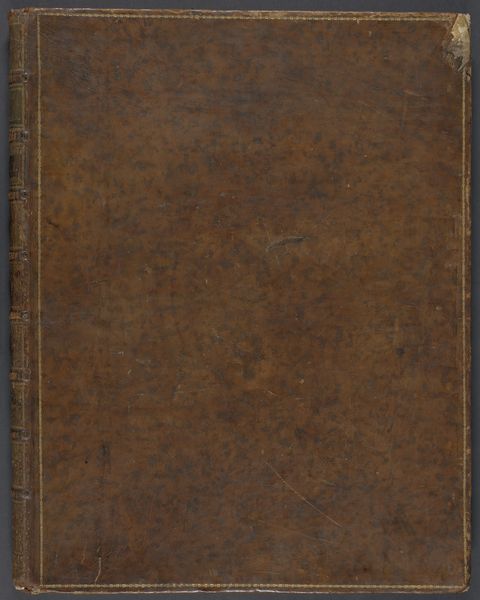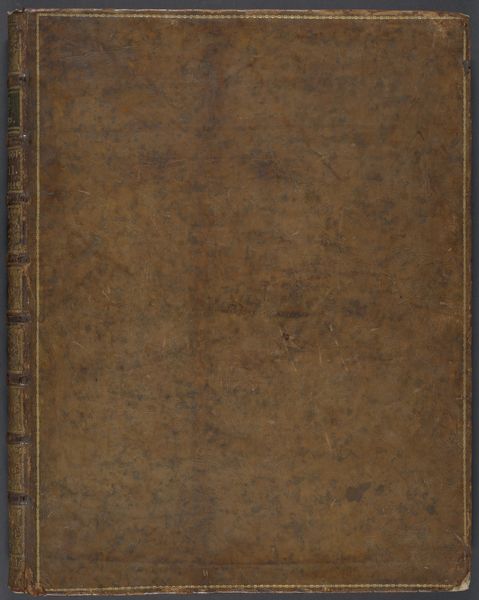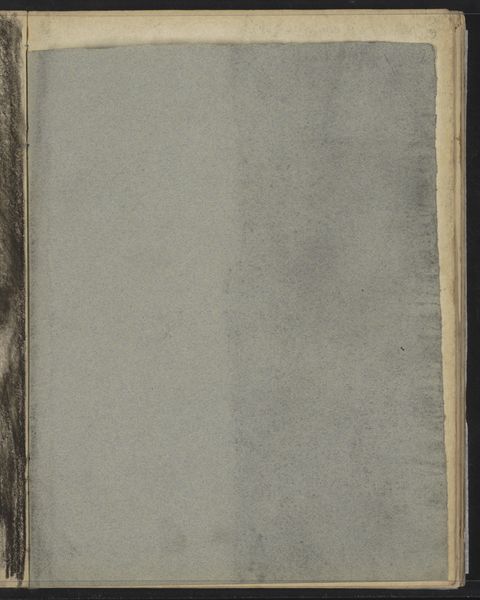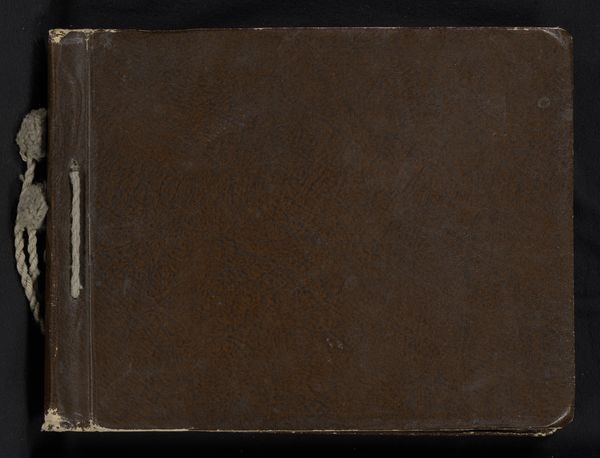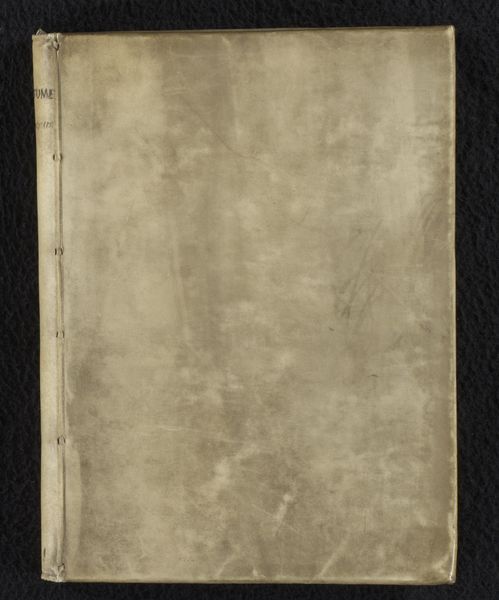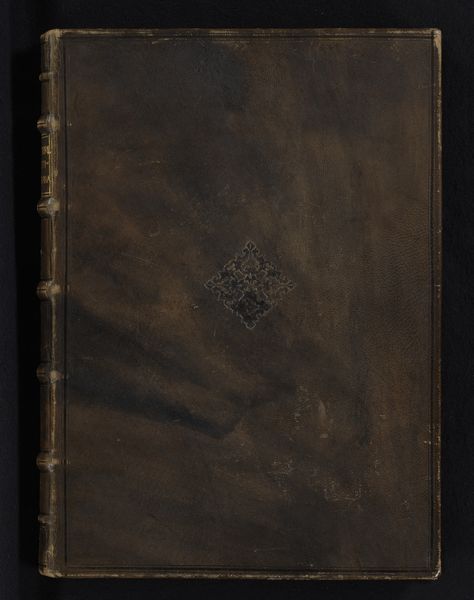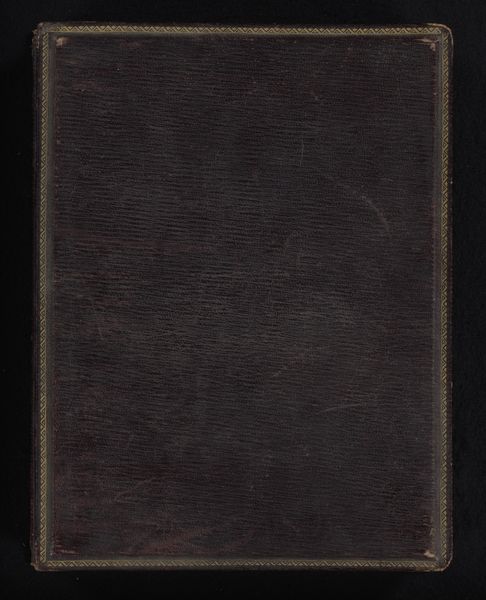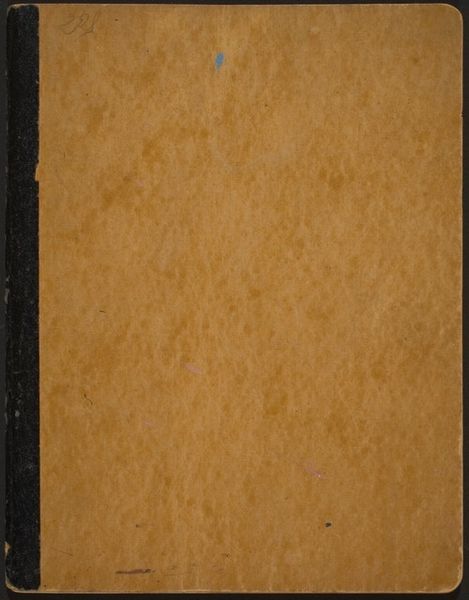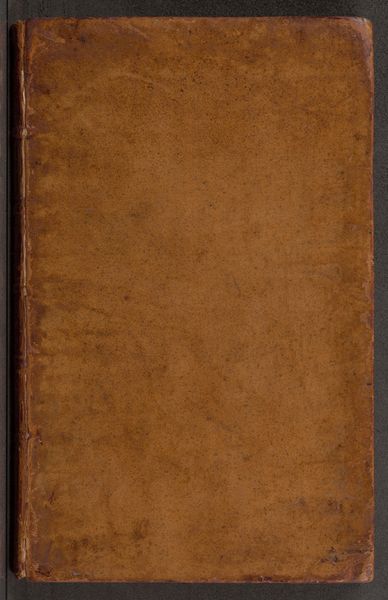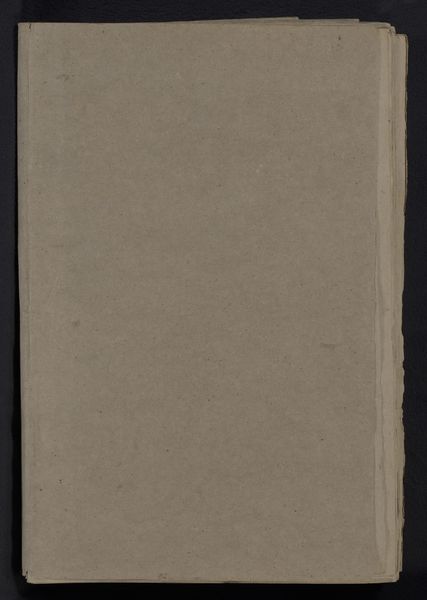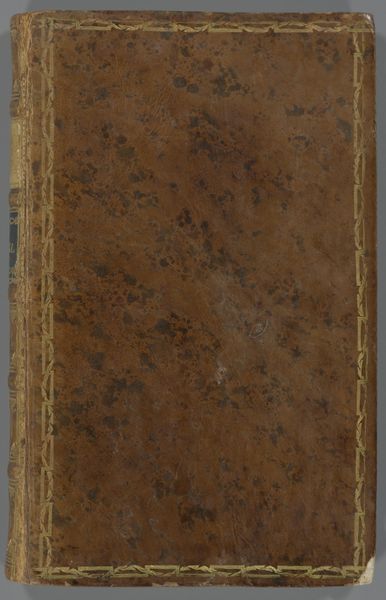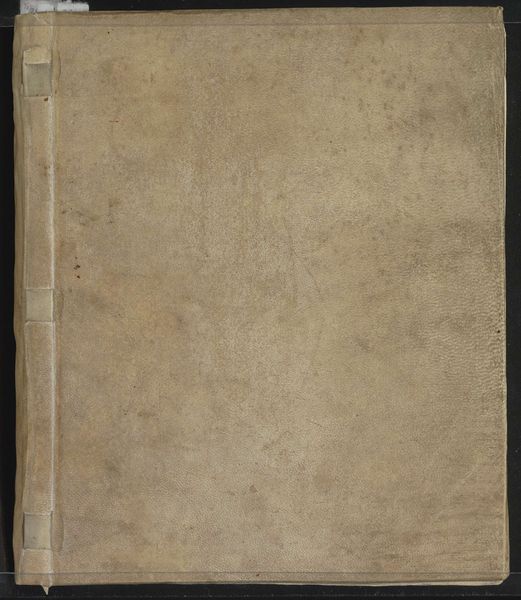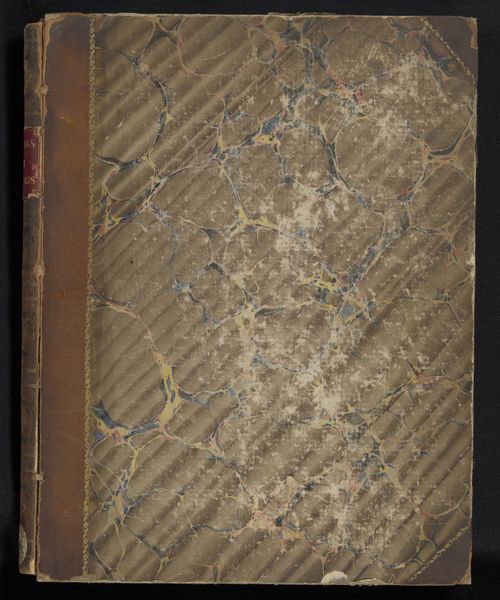
drawing, paper
#
portrait
#
drawing
#
paper
#
11_renaissance
#
coloured pencil
Dimensions: height 315 mm, width 250 mm, thickness 45 mm, width 505 mm
Copyright: Rijks Museum: Open Domain
Curator: Looking at the "Book with Imperial Portraits" by Joos Gietleughen, made around 1557-1559, the aged cover and the modest binding give it an incredible gravitas. It appears that it contains colored pencil drawings on paper. The question for me is, what did these portraits mean to people then? Editor: The overall composition immediately strikes me as austere and dignified, which contrasts sharply with the likely sumptuous and colorful contents of the book. The smooth, almost reflective surface, bound within gold-trimmed brown leather, speaks of restraint and refinement. Curator: Right. Bound books during this period acted almost as portable monuments to the power they held within, almost functioning as secular reliquaries. Who the emperor was mattered deeply and connected people from vast territories under a unified image. Editor: Precisely. It isn't simply about realistic depiction, but about the visual language constructing power. Look at the clean lines, and the subtle marbling of the leather; it lends a depth and tactility without being showy. It exudes quiet confidence, wouldn’t you agree? Curator: Yes! Images of emperors and leaders create lineages and lend legitimacy to rulers and states. To carry a collection of portraits in this beautiful book, shows how leaders carefully constructed an identity of legacy and authority through portraiture. Editor: That is a salient point. It transcends mere representation. Each visual choice builds a network of signs. And I must also acknowledge that its survival also bears significance; so few objects weather centuries so gracefully, preserving intent across time. Curator: I love to think that the contents allowed people during the Renaissance, at any given moment, to reflect on power structures and authority, visually compiling all rulers past in a book with such fine detail, so the past rulers stay very close at hand. Editor: It does prompt me to rethink how we visually curate influence today. The deliberate materiality adds to its impact. What this book has to say about influence is a reminder of the potency within such designed forms.
Comments
No comments
Be the first to comment and join the conversation on the ultimate creative platform.
